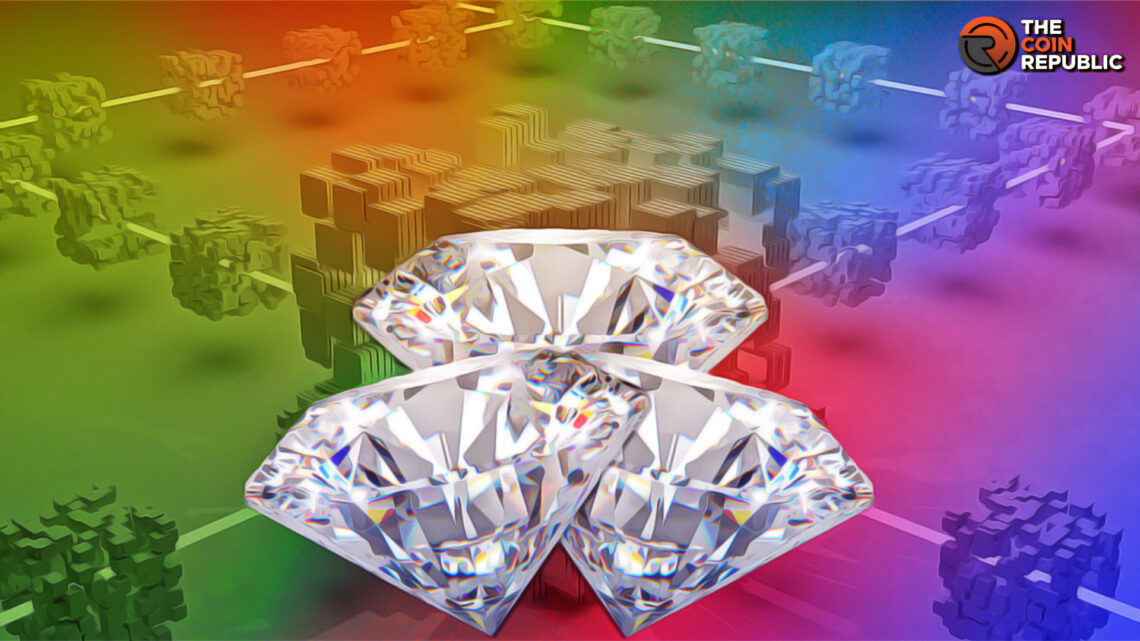- 1 Russia produced the most diamonds globally in 2022.
- 2 The European Commission is looking to impose a ban on Russian diamond imports.
Blockchain technology is not just limited to cryptocurrencies now. Different industries are using it for the supply chain. The International Business Machine (IBM) is among the companies implementing the technology for such purposes. Now organizations in the diamond industry are turning to technology to provide their products’ proof of origin.
They Are Not Blood Diamonds
KULR-TV, an NBC affiliate TV station in Billings, reports diamond polishing labs in Belgium’s famous Antwerp diamond district are turning to blockchain to prove their diamonds aren’t coming from Russia.
Antwerp serves as a grooming hub for over eighty percent of the globe’s raw diamonds. The region sees $16 Billion worth of polished diamonds passed annually through the district’s exchanges.
Data analytics company GlobalData reported that Russia produced the most diamonds in 2022 globally. The industry is largely dominated by a mining group in the country dubbed Alrosa. The company accounts for 95 percent of Russian production and 27 percent of diamond extraction globally.
Recent reports highlight that the European Commission, a European Union (EU) institution, is looking to impose a ban on Russian diamond imports next year. A proposal seen by news agency Reuters notes that “This phasing-in of indirect import bans takes into consideration the need to deploy an appropriate traceability mechanism that enables effective enforcement measures and minimizes disruptions for market players.”
Blockchain technology simplifies traceability by sharing the base document with all the associated parties. A faulty product can be traced back to its place of origin. Additionally, blocks or digital ledgers attached to the blockchain contain information from every process it has gone through, expediting the identification of any discrepancy.
In October, The Kyiv Independent, a Ukrainian newspaper, noted in their report that Russia continued selling diamonds to the West. Brands like Tiffany and Cartier had said before that they stopped making purchases following Russia’s full-scale invasion of Ukraine.
The investigation writes that “Clients of jewelry brands like Tiffany and Cartier have no idea the money they spend on diamonds may contribute to Russia’s war.” However, Tiffany denied allegations of the purchase. Extracted diamonds are certified under the Kimberley Process which makes sure they do not fuel rebel movements.
Kimberley Process Certification Scheme was established to prevent the infamous “blood diamonds” conflict. The term is used for diamonds extracted in a warzone to fuel the insurgency. However, this scheme is only limited to rebel groups operating in a civil war-like landscape which makes Russia prone to its implications.
Companies like iTraceiT, as KULR-TV reports, allow their customers to prove that their diamonds are not sourced from Russia. Frederik Degryse, the company CEO, said “Every parcel or every diamond will have an internal reference, which is linked.” He further added, “If there’s any deviation between the actual physical diamonds that you’re weighing and the numbers that are there, then it’ll pop up.”
The Russia-Ukraine conflict began in February 2022 and is still ongoing. Casualties of the war reached over half a million according to the US newspaper The New York Times.
Anurag is working as a fundamental writer for The Coin Republic since 2021. He likes to exercise his curious muscles and research deep into a topic. Though he covers various aspects of the crypto industry, he is quite passionate about the Web3, NFTs, Gaming, and Metaverse, and envisions them as the future of the (digital) economy. A reader & writer at heart, he calls himself an “average guitar player” and a fun footballer.


 Home
Home News
News







